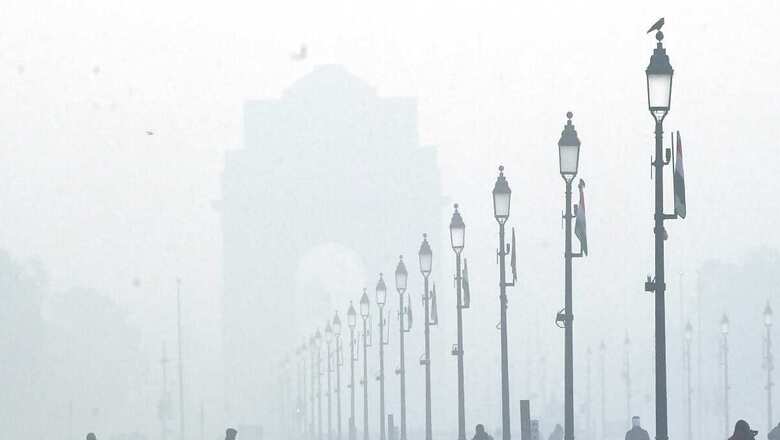
views
Delhi and its neighbouring cities were jolted on Thursday afternoon when a 6.1 magnitude earthquake struck the Hindu Kush region of Afghanistan.
Afghanistan has been rattled twice by quakes of Magnitude 6 and above since October last year.
#WATCH | Earthquake of magnitude 6.1 on Richter scale hits Afghanistan, tremors felt in North India.(Visuals from Poonch, J&K) pic.twitter.com/kMTT2XxYQ7
— ANI (@ANI) January 11, 2024
The earthquake struck at around 2:40 pm, said the National Centre for Seismology (NCS).
Earthquake of Magnitude:6.1, Occurred on 11-01-2024, 14:50:24 IST, Lat: 36.48 & Long: 70.45, Depth: 220 Km ,Location: Afghanistan for more information Download the BhooKamp App https://t.co/fN2hpmK3jO @KirenRijiju @Ravi_MoES @Dr_Mishra1966 @ndmaindia @Indiametdept pic.twitter.com/q5pkBVscsW— National Center for Seismology (@NCS_Earthquake) January 11, 2024
Tremors were also felt in parts of Rajasthan, Jammu and Kashmir and neighbouring Pakistan. According to Pakistani news agency Geo News, tremors were felt in Lahore, Islamabad and Khyber Pakhtunkhwa cities. Last week, the city of Quetta and its surrounding areas were hit by an earthquake measuring 4.6 on the Richter scale.
Meanwhile, according to the US Geological Survey (USGS), which reports magnitude using the Moment Magnitude scale, the magnitude of the quake was 6.4 while its epicentre was 44km south-southeast of Jurm, Afghanistan.
Afghanistan is known to be frequently hit by earthquakes, especially in the Hindu Kush mountain range, near the junction of the Eurasian and Indian tectonic plates.
Two months ago in November 2023, Delhi and its neighbouring areas were jolted by strong tremors as a strong 6.4 magnitude earthquake struck Nepal at a depth of 10 km. The tremors were also felt in parts of Uttar Pradesh, Uttarakhand and Bihar.
On October 3, 2023, strong tremors were felt in the national capital after four earthquakes hit Nepal within an hour.
Why is Delhi Prone to Earthquakes?
The National Disaster Management Agency (NDMA) has stated that more than 59 per cent of India’s land area is “under threat of moderate to severe seismic hazard”. The entire Himalayan belt is considered prone to earthquakes of magnitude exceeding 8.0.
The Himalayan range are located in the northern and northeastern region. They were formed by the Indian plate’s movement towards the Nepalese plate. Hence, this entire region frequently experiences earthquakes due to its location on the boundary (fault zones) of two massive tectonic plates. The collision of these plates leaves both India and Nepal vulnerable.

















Comments
0 comment